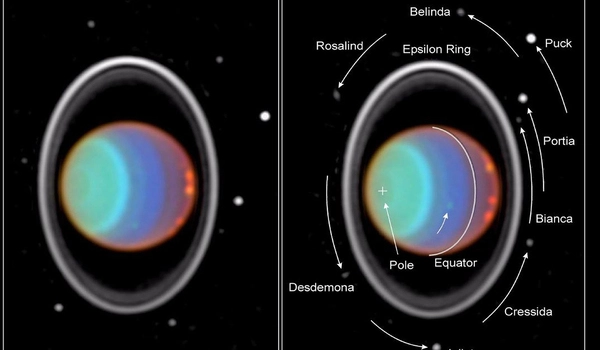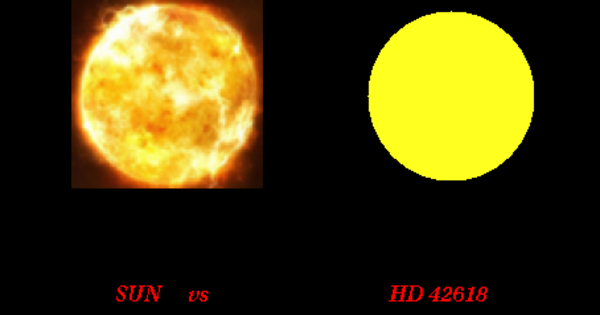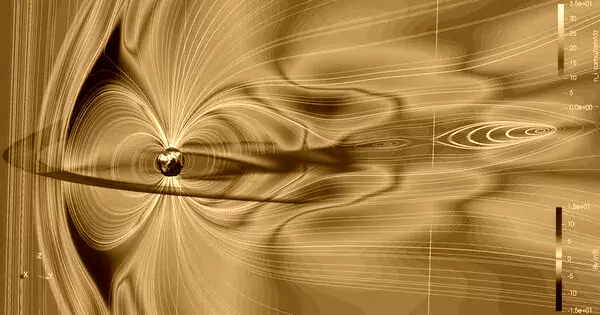Uranus, the seventh planet from the sun, has a system of rings that were discovered in 1977, and the James Webb Space Telescope may provide new insights into the structure and composition of these rings. The telescope is designed to operate at a much colder temperature than previous space telescopes, which will allow it to observe the universe in new and exciting ways.
Following in the footsteps of the Neptune image released in 2022, NASA’s James Webb Space Telescope has captured an incredible image of Uranus, the solar system’s other ice giant. The new image depicts the planet’s dramatic rings as well as bright features in its atmosphere. The Webb data show the observatory’s unprecedented sensitivity to the faintest dusty rings, which have previously only been imaged by two facilities: the Voyager 2 spacecraft as it flew past the planet in 1986, and the Keck Observatory with advanced adaptive optics.
Uranus, the seventh planet from the Sun, is unique: It rotates on its side, at about a 90-degree angle from its orbit plane. Because the planet’s poles experience many years of constant sunlight followed by an equal number of years of complete darkness, this causes extreme seasons. (It takes 84 years for Uranus to orbit the Sun.) The northern pole is currently in late spring, as seen here; Uranus’ northern summer will be in 2028. In contrast, it was summer at Uranus’ south pole when Voyager 2 visited. The south pole is now on the planet’s ‘dark side,’ out of sight and facing the darkness of space.
In visible wavelengths, Voyager 2’s camera revealed an almost featureless blue-green ball. We see more detail with the infrared wavelengths and extra sensitivity of Webb, demonstrating how dynamic Uranus’ atmosphere is.
This infrared image from Webb’s Near-Infrared Camera (NIRCam) combines data from two filters at 1.4 and 3.0 microns, which are shown in blue and orange, respectively, in the image. In the resulting representative-color image, the planet has a blue hue.
In visible wavelengths, Voyager 2’s camera revealed an almost featureless blue-green ball. We see more detail with the infrared wavelengths and extra sensitivity of Webb, demonstrating how dynamic Uranus’ atmosphere is.
A polar cap is a brightening area at the pole facing the Sun on the planet’s right side. This polar cap is unique to Uranus; it appears when the pole enters direct sunlight in the summer and disappears in the fall; the Webb data will help scientists understand the currently unknown mechanism.

Webb discovered a surprising feature of the polar cap: a subtle enhanced brightening in the center of the cap. Webb’s NIRCam’s sensitivity and longer wavelengths may explain why we can see this enhanced Uranus polar feature when other powerful telescopes like the Hubble Space Telescope and Keck Observatory have not.
At the edge of the polar cap lies a bright cloud as well as a few fainter extended features just beyond the cap’s edge, and a second very bright cloud is seen at the planet’s left limb. Such clouds are typical for Uranus in infrared wavelengths and likely are connected to storm activity.
Due to the chemical composition of its interior, this planet is classified as an ice giant. The majority of its mass is thought to be made up of a hot, dense fluid of “icy” materials such as water, methane, and ammonia that exists above a small rocky core.
Uranus is known to have 13 rings, 11 of which are visible in this Webb image. Some of these rings are so bright with Webb that they appear to merge into a larger ring when placed close together. The planet has nine main rings, and two fainter dusty rings (such as the diffuse zeta ring closest to the planet) that were not discovered until the 1986 flyby of Voyager 2.
Webb also photographed many of Uranus’ 27 known moons (the majority of which are too small and faint to be seen in this image); the six brightest are identified in the wide-angle image. This was a 12-minute exposure image of Uranus using only two filters. It’s just the tip of the iceberg when it comes to observing this mysterious planet. In its 2023-2033 Planetary Science and Astrobiology decadal survey, the National Academies of Sciences, Engineering, and Medicine identified Uranus science as a priority in 2022. Additional Uranus studies are currently underway, with more planned during Webb’s first year of science operations.
















